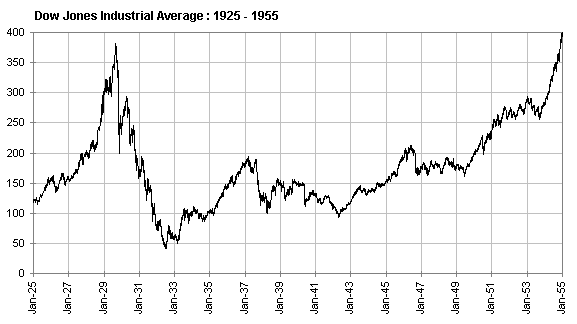It looks like you're new here. If you want to get involved, click one of these buttons!

Dow Jones Average 1925-1955”The longest collapse in history was 1929 and lasted 2.8 years. The 2007 recession lasted 1.3 years.”



This added efficiency should be true for most ETFs, except for Vanguard's, which for complicated reasons I'm too tired to explain aren't more efficient than Vanguard's index mutual funds as they are actually another share class of those funds.
IMHO this perspective is backward. This added efficiency is true for Vanguard ETFs as well - so far they have been able to dump all gains onto APs. As a result, it is not that Vanguard's ETFs are less efficient than those of other families, but that Vanguard's OEF share classes are more efficient than mutual funds of other families.
Kiplinger, Aug 2017Fidelity ranks competitively, too, with 3,532 NTF mutual funds and 85 commission-free ETFs, including dozens of iShares ETFs
© 2015 Mutual Fund Observer. All rights reserved.
© 2015 Mutual Fund Observer. All rights reserved. Powered by Vanilla